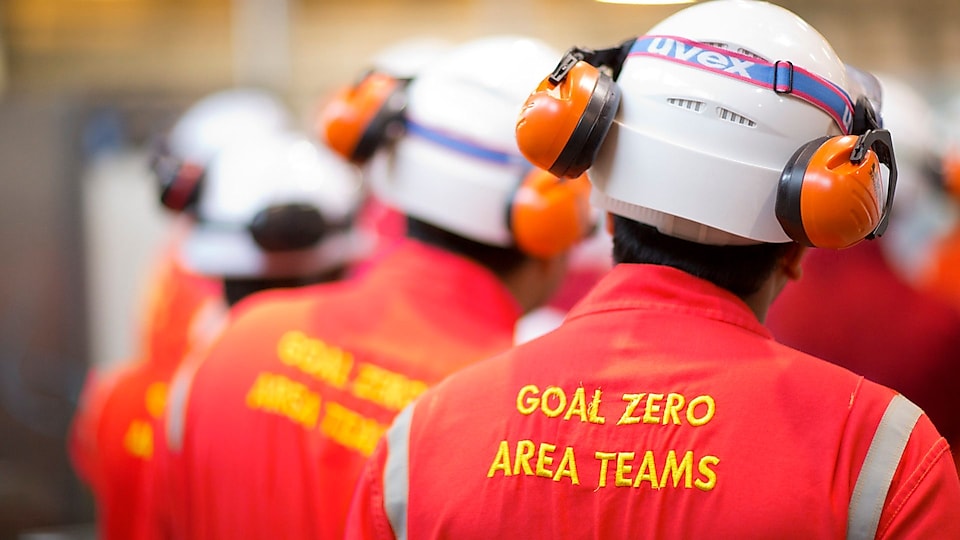Registration, Evaluation, Authorisation and Restriction of Chemicals (REACH)
REACH is the key chemical control regulation in the European Union. The acronym REACH alludes to its key components, Registration, Evaluation, Authorisation and Restriction of Chemicals manufactured in or imported into the European Union.
Shell supports the underlying goals of REACH, which include placing greater responsibility on industry to manage the risks that chemicals may pose to health and the environment. This is consistent with the Shell commitment to promote the responsible production, use and handling of the products made.
For every product Shell Legal Entities in the European Economic Area (EEA) sell a REACH registration is in place. Shell will continue to collaborate with customers to ensure ongoing compliance for the products Shell sells and with suppliers to gather all of the required information products and their downstream uses.
Shell registrations do not cover the manufacture of these products outside the EEA and the importation of these products into the EEA by non-Shell companies.
In case you are sourcing Shell products from non-EEA Shell manufacturing sites and want to import those into the EEA, or if you are located outside of the EEA and are sourcing Shell products from EEA manufacturing sites and export them back into the EEA (so called re-import), different measures need to be taken to obtain REACH coverage:
- In case you are an EEA importer and source Shell products from Shell manufacturing sites outside the EEA, you should ensure that your import is covered through a registration conducted by an appointed Only Representative (OR) - according to REACH Article 8 - of the Shell manufacturing/formulating entities outside the EEA. REACH does not make a distinction between direct and indirect imports into the EEA. However, handling direct and indirect imports require different provisions.
- If you are located outside of the EEA and are sourcing Shell products from Shell EEA manufacturing sites and export them back to the EEA (so-called re-import), different measures need to be taken to obtain REACH coverage through existing Shell registrations.
Re-import can be covered if the re-imported substance has been registered by the Shell EEA Legal Entity already and if the substance
- remains the same, i.e. same chemical identity or becomes a constituent monomer of an exempt polymer
and
- is not mixed with identical substances sourced from other supply chains.
In case a re-imported substance cannot be covered by a Shell registration, the EEA importer needs to have its own registration if the re-imported volume is >1 t/a.
Alternatively, the non-EEA exporter (provided that he’s a manufacturer or formulator) can appoint an Only Representative to cover the EU importer through the OR’s registration.
For further advice, please approach your usual business contact.
Along with the implementation of REACH, all Safety Data Sheets provide information on the safe use of chemicals and the respective risk management measures. An interactive guide introduces the key features of REACH compliant Safety Data Sheets.
REACH for Shell Lubricants Supply Chain
Shell Lubricants companies have either
- registered substances they manufacture or import into the EEA (including substances in preparations) that had a registration deadline of 31st May 2018 (e.g. grease thickeners) or
- have ensured that where a registration does not exist, these substances are covered by an appropriate Only Representative arrangement.
- have ensured that an efficient approach is taken to simplify the communication of information from the chemical safety assessments of hazardous components in lubricants formulations via exposure scenarios. Hundreds of applications of different lubricants and lubricant additives have been summarized into a much smaller number of generic use groups sharing the same set of use descriptors based on comparable human and environmental exposure.
Shell Lubricants Products
- Base Oils and Process Oils:
We can confirm that the following product families have been registered under REACH:
Catenex
Edelex
Flavex
Gravex
HMVIP
HVI
Slack Wax
Microwax
MVIN
MVIP
Olea
Ondina
Risella
Sarawax
XHVI
- Finished Lubricants
In addition to manufacture, Shell Lubricants companies blend finished lubricants (i.e. preparations) for which many substances are procured. The REACH regulation does not require the registration of preparations. However, all component substances must be registered.
If you have any questions about registration, uses and exposure information, please address them to your usual Shell Lubricants representative or Contact Us or contact us via the Shell REACH Mailbox.
Most of the substance types in the ECHA Candidate List of SVHC for authorisation have been included in our own Shell Lubricants Restricted Substances List for well over 10 years. This means that, during this time, the use of these “Substances of Very High Concern” (SVHC) in new formulations developed for Shell Branded Lubricant Products has been reduced, discouraged or discontinued.
Where these SVHC are known to be used in existing formulations, they are high priority for replacement. There are some exceptions to this, for reasons outlined hereunder and they are: boric acid, certain sodium borates, octylphenol ethoxylate, nonylphenol ethoxylate and trixylyl phosphate.
As further detailed below, based on our current level of knowledge, we are not aware of any Shell Branded Lubricant Products in the active portfolio which include SVHC other than boric acid, certain sodium borates, octylphenol ethoxylate, nonylphenol ethoxylate and trixylyl phosphate. Where these substances are present at greater than 0.1% in a Shell Branded Lubricant Product, this information is being included on the relevant product Safety Data Sheet.
Boric acid and sodium borates in Shell Lubricants formulations
For many years boric acid has been widely used for the manufacture of thickeners for lubricating greases, while sodium borates are common ingredients of coolants
- Coolants. Some of our coolants contain an amount between 0.1% and 0.99% of Disodium tetraborate pentahydrate. The concentration is well below the special concentration limits specified along with the publication of the European Commission decision to classify the substance, and confirmed with the publication of the First Adaptation to Technical Progress (ATP) of the CLP regulation in September 2009 (Annex VI, Table 3.1). Where this substance is present at 0.1% or more in a Shell Branded Lubricant, this information is included in chapter 3 of the relevant product Safety Data Sheet. Therefore, the component is not affecting the classification and labelling of the finished coolant products. We will keep monitoring status of Disodium tetraborate pentahydrate in ECHA recommendations to the European Commission for inclusion in Annex XIV of REACH.
- Grease thickeners. Shell Lubricants companies place on the market some lubricating greases based on Borate complex thickener technology. Such thickeners are obtained via reaction of Boric acid with an excess of strong alkaline base, so that in the finished reacted product no free Boric Acid is left. The resulting Borate complexes have been registered for REACH as toxic for reproduction, Category 2 - with Special Concentration Limits set on their Boron content - and not listed themselves in the SVHC list.
Octylphenol ethoxylates in Shell Lubricants formulations
One diesel automotive formulation and one transmission fluid for a specific customer contain approximately 0.1% of octylphenol ethoxylate (OPE). We are engaging with our suppliers to ensure that the levels of these substances in the materials they provide to us are reduced or eliminated completely. Where this substance is present at 0.1% or more in a Shell Branded Lubricant, this information is included in chapter 3 of the relevant product Safety Data Sheet.
Nonylphenol ethoxylates in Shell Lubricants formulations
Seven Shell Lubricants EU marketed products contain nonylphenol ethoxylate. Three of these products are customer specific and we are working to replace them with suitable alternatives. For the other four products, we are engaging with our suppliers to ensure that the levels of these substances in the materials they provide to us are reduced or eliminated completely. Where this substance is present at 0.1% or more in a Shell Branded Lubricant, this information is included in chapter 3 of the relevant product Safety Data Sheet.
Trixylyl phosphate in Shell Lubricants formulations
One Shell Lubricants EU marketed product contains trixylyl phosphate. We are working on substitution of this product with a less hazardous one and will communicate the implementation plan in due time to customers. This information is included in chapter 3 of the relevant Product Safety Data Sheet.
More information on our products can be found at the Shell Lubricants website.
If you need specific information on SVHC status, please contact your usual Shell Lubricants representative or visit the contact us page or contact us via the Shell REACH Mailbox.
More in Sustainability
Safety
We are committed to delivering energy responsibly and safely, preventing harm to our employees, contractors, local communities and the environment.
Our approach
Our Goal Zero ambition is to achieve no harm and no leaks across all of our operations. Everyone working for Shell strives to achieve this goal each day.

